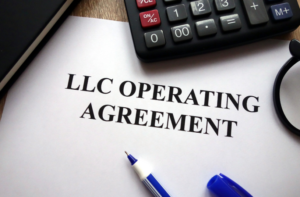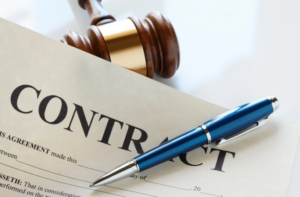Entering a business partnership can be an exciting opportunity. It allows individuals to pool resources, share responsibilities, and, of course, share in the profits and losses. However, these financial aspects—particularly the profit and loss—are critical elements that need careful consideration. Understanding how profit and loss statements work within a partnership is essential to ensuring the success and financial health of your business.
What Is a Profit and Loss Statement?
A profit and loss statement (P&L), also known as an income statement, is one of the key financial documents used in business to summarize revenues, costs, and expenses over a specific period. It provides a clear picture of a company’s financial health, helping owners and partners understand whether the business is profitable or experiencing a loss.
In a partnership, the profit and loss statement is crucial because it determines how much profit each partner will receive or how much loss each will need to cover.
A profit and loss statement is essentially a report that details all the income earned by the business, minus all the expenses incurred, resulting in a net profit or loss. This statement helps businesses evaluate their financial performance and make informed decisions about future operations.
The Importance of P&L in a Partnership
In any partnership, understanding how profits and losses are distributed is vital. A partnership is based on the agreement that all parties will share in both the successes and the challenges of the business. Whether the business is booming or struggling, each partner’s share of profit or loss needs to be clearly defined.
When partnerships don’t have a clear profit and loss distribution plan, conflicts can arise. That’s why having a detailed profit and loss statement is essential. It helps track the financial status of the partnership and keeps everything transparent between the partners. This transparency reduces the likelihood of disputes and ensures everyone knows where they stand financially.
How Partnerships Share Profit and Loss

Profit and loss sharing in a partnership is often outlined in the partnership agreement. This document specifies how profits will be distributed among partners, whether based on ownership percentage, contributions, or another agreed-upon method. Partners can decide to share profits equally or based on the capital each has invested in the business.
Losses are also shared in a similar manner. In many cases, partners are liable for the business’s losses based on the same ratio in which they share the profits. However, this can vary depending on the type of partnership (general, limited, or limited liability partnership) and the terms of the agreement.
Without a formal agreement in place, the law typically assumes that profits and losses will be shared equally among partners. However, this default rule may not always be fair or practical.
It’s essential to have a well-drafted partnership agreement, and that’s where Roquemore Skierski Business Lawyer can assist. We ensure that your agreement clearly defines how profits and losses will be handled, so there are no surprises down the road.
The Role of the Profit and Loss Statement in Decision-Making
The profit and loss statement is more than just a financial report—it’s a tool for decision-making. For partnerships, it helps partners make informed choices about how to grow the business, where to cut costs, and whether they need to seek additional financing.
By regularly reviewing the income statement and profit and loss statement, partners can assess the financial health of the business and identify trends. For example, if expenses are consistently higher than income, partners may need to reevaluate their business strategy. Conversely, if profits are steadily increasing, it might be time to reinvest in the business or expand.
At Roquemore Skierski Business Lawyer, we understand how important these financial insights are. We help our clients not only draft clear profit-sharing agreements but also provide guidance on using financial statements to make smart business decisions.
Risks Associated with Profit and Loss in Partnerships
While partnerships offer many advantages, they also come with risks, particularly when it comes to financial responsibility. In a general partnership, each partner is jointly liable for the debts and obligations of the business. This means that if the business suffers a loss or accrues debt, each partner could be responsible for covering it, even if it exceeds their initial investment.
For instance, if one partner makes a costly mistake or the business cannot pay its bills, creditors can pursue the personal assets of all partners, not just the one who made the mistake. This is one of the reasons why having a clear profit and loss agreement is so important—it ensures that all partners are aware of their financial obligations and liabilities.
To mitigate these risks, some businesses opt for limited liability partnerships (LLPs), which protect partners from personal liability beyond their investment in the business. At Roquemore Skierski Business Lawyer, we help businesses determine which type of partnership structure is best suited to their needs, balancing risk with profit potential.
Why Clear Profit and Loss Agreements Are Critical

A well-drafted profit and loss agreement not only defines how profits and losses are distributed but also helps prevent disputes between partners. Without a clear agreement, misunderstandings can arise, leading to potential legal challenges and damaged relationships.
Additionally, a well-structured profit and loss agreement provides transparency and accountability, ensuring that all partners have a clear understanding of their financial obligations and expectations.
This clarity is essential for maintaining trust within the partnership, as it minimizes the risk of conflicts stemming from ambiguous terms or uneven profit distribution. A solid agreement can serve as a roadmap for resolving financial issues amicably, reducing the likelihood of costly litigation.
We strongly advocate for having a comprehensive partnership agreement in place before embarking on any business venture.
Safeguard Your Partnership with Clear Profit and Loss Agreements
Managing profit and loss in a partnership can be challenging, but with the right legal guidance, it doesn’t have to be. A well-structured partnership agreement, supported by regular financial reporting through profit and loss statements, ensures that all partners are aligned and protected.
At Roquemore Skierski Business Lawyer, we specialize in helping businesses navigate the complexities of partnerships and profit-sharing. Contact us today at (972) 698-5391 to learn how we can help you create a partnership agreement that supports your business’s financial health and success.



